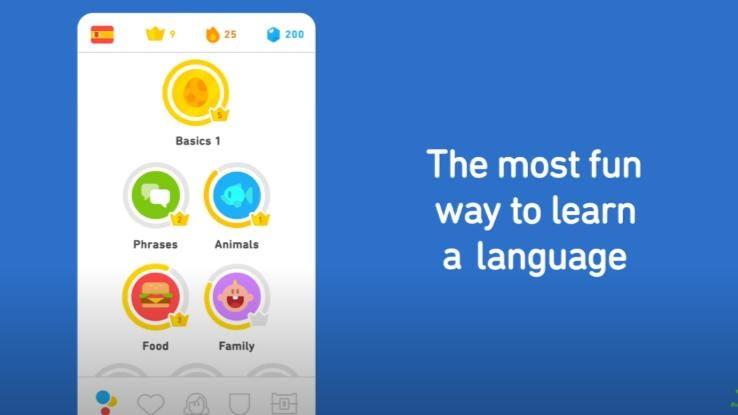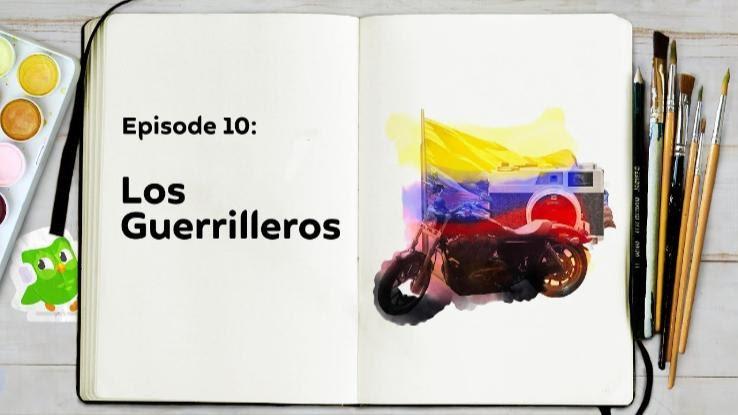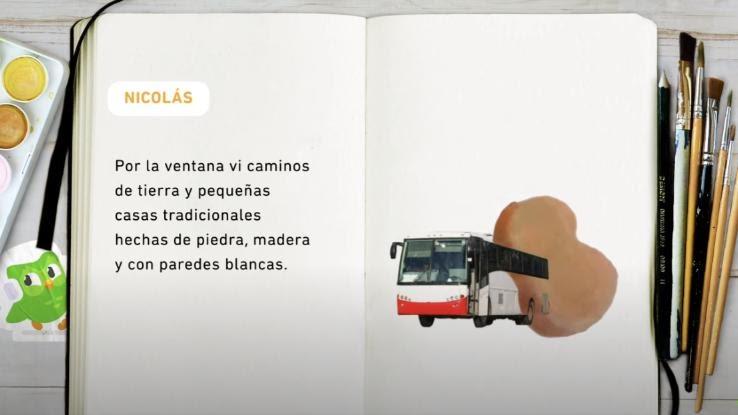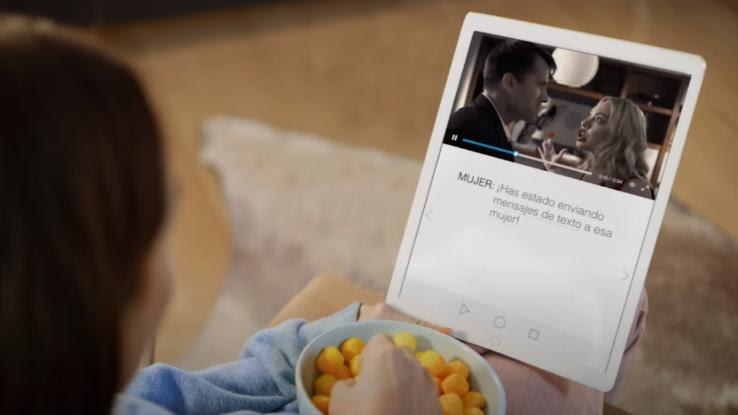How Do You Say Again Is Spanish

Ever find yourself looking up easy-to-learn Spanish words out of curiosity? Whether you're planning to travel to a Spanish-speaking country, want to communicate better with a native-speaker neighbor or simply want to broaden your language horizons, it would be great if you could go all-in and learn some Spanish for free. And you can: A program called Duolingo has made it possible to do exactly that.
After downloading this app on your smartphone or logging on to the Duolingo website after creating an account, you can start learning Spanish for free in minutes. But what exactly makes this educational tool so effective? Learn more about the program, including how — and why — it works, before you try it out for yourself.
How Does Duolingo Work?
Once you create a free account and select the new language you want to learn, Duolingo gets you started on a "learning tree" that contains different lessons featuring specific categories. Say you've decided to learn Spanish. During the first few lessons, you'll start out by mastering easy-to-learn Spanish words in categories such as days of the week, greetings and colors. Once you've mastered the lesson, you'll begin to earn "crowns" that unlock more advanced levels.

The Duolingo approach combines pictures, audio and printed words to help your mind form multiple connections between the images, sounds and spellings of each word you learn. No matter what your particular learning style is, Duolingo makes it easy to begin mastering a new language because of the ways it engages your different senses.
Among its other strengths is that Duolingo presents you with quizzes in a variety of formats. For some quizzes, you'll match each Spanish word with its English counterpart, while in others the program says the word and asks you to repeat it back into your device's microphone. This also helps reinforce your learning in both visual and auditory ways. If you find yourself stuck, there's a built-in language dictionary you can use to reveal what any given word in a sentence means.
…And Does Duolingo Really Work?
Depending on your end goals, Duolingo can really work. If you're looking to build a strong foundation for learning a language or want to boost your basic vocabulary, this app is a great tool. Duolingo does make it easy to learn Spanish and other words. However, it's not going to make you fluent in a language — the app simply doesn't provide enough opportunities to learn deeper syntax or practice having realistic conversations. In a study from Michigan State University, participants spent a college semester's worth of time studying Turkish, and then they took the regular exam for the in-person Turkish 101 class. While all the participants learned more vocabulary words from the app than they knew at the beginning, "nobody was able to use the language very communicatively."

One great thing about Duolingo, though, is how interactive it is. Not only will it introduce you to new words as your skills grow, but you'll see newer words worked into sentences with words you learned in previous lessons to help transition you to progressively more difficult words and concepts.
If you're looking for a more immersive experience to hear more examples of a language in action, Duolingo also offers stories and podcasts in several different languages. Unlike simply learning a new language from a book, you get to hear native speakers use the words you're learning, but in conversational or other formats. It's also worth checking out Duolingo's YouTube channel, where you'll find things like Duo Songs that feature native speakers singing songs in their own languages.
Which Language Courses Are Best?
Want to pick up another language aside from Spanish? Look into user opinions about courses that have the structure you prefer. Spanish, French and English have the benefit of offering podcasts, while Spanish, Italian, Portuguese, French and German offer stories.

Duolingo has built its programs up over time, so some of the courses are further developed and more comprehensive than others. Your success with the courses (and what you might ultimately decide to choose) also depends on what your native language is, as many of the earlier courses were designed for native English or Spanish speakers.
That said, Duolingo is constantly working to keep its courses growing. Visit its Incubator page to find out if there's currently a course in development that you can help contribute to and to see what's coming soon. Everything from English for Romanian speakers to Navajo for English speakers is in the works, and if you don't see more courses to take right now, it's possible that you'll find the languages you're looking for on Duolingo in the future.
How Does It Compare to Competitors?
Before Duolingo, language software tended to be on the pricier side. While programs like Rosetta Stone and Open English are still great ways to learn new languages from the comfort of home, these and other courses that teach you the fundamentals of Spanish may not be the most budget-friendly options for you. While part of its appeal is that it's free to use, Duolingo isn't without competitors when it comes to the effectiveness of its teaching, either. Programs like Babbel, Busuu and FluentU might also appeal to you.

In many ways, Babbel is similar to Duolingo, except that it requires a monthly subscription fee. While both use similar techniques to teach users their language of choice, Babbel doesn't include any ads and has a less gamified format than Duolingo.
Busuu is another paid subscription program that's gaining popularity. While Duolingo helps you learn by using recordings of native speakers and feedback in the form of audio quizzes, Busuu is designed to make learning more social. As you learn new skills, you'll be able to get feedback from other users around the world who already speak the language you're learning.
FluentU takes a different approach to traditional language lessons by giving you access to a series of real-world videos, such as movie trailers, music videos and news broadcasts, in the language you're looking to learn. While it does require a monthly subscription, it's an interesting concept and might be something to look into, especially after you've learned the basics of your new language or if you're looking for something that feels more immersive.
Source: https://www.questionsanswered.net/tech/duolingo-free-language-lessons?utm_content=params%3Ao%3D740012%26ad%3DdirN%26qo%3DserpIndex
0 Response to "How Do You Say Again Is Spanish"
Post a Comment